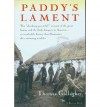Currently reading
Paddy's Lament, Ireland 1846-1847: Prelude to Hatred
Pivot: The Only Move That Matters Is Your Next One
When in French: Love in a Second Language
Beyond the Job Description: How Managers and Employees Can Navigate the True Demands of the Job
Vision and Art: The Biology of Seeing
Achieving Your Potential As A Photographer: A Creative Companion and Workbook
Reclaiming Conversation: The Power of Talk in a Digital Age
Picture Perfect Practice: A Self-Training Guide to Mastering the Challenges of Taking World-Class Photographs (Voices That Matter)
Man's Search for Meaning
Terms of Service: Social Media and the Price of Constant Connection
Northwest Coast
 This is a Time-Life book -- so I am impressed with how much I enjoyed it. There are several double-page photo spreads. I was also impressed with the writing, which has a personal style and personal comments, along with lots of natural history and historical facts. Here's a tidbit about elk migration:"An inexplicable thing happens when the migrants reach the end of their trip at some snow-banked mountain basin. With complete abandon, young and old suddenly break into a dance, a wild revel of prancing and pawing that goes on until the creatures drop from exhaustion. When they have calmed down and rested, an idyllic summer lies ahead, with grasses and herbs for browsing and snow patches for snoozing (for relief not only from the heat but also from the fleas.)" p. 97And about Cape Flattery, the most NW point in the lower 48:"Geographically, Flattery will get you nowhere, for it is at the very end of the line. But it is a good place to stop, look and listen. So I stood for a while, just breathing and looking, trying to commit the whole spacious panorama to memory, knowing that I might never return to this spot. The Washington shore stretched southward to my left in a long scallop of white beach, ending in a line of sentinel rocks at Points of Arches. Off to my right was the mouth of the Strait of Juan de Fuca, 15 miles wide, a roomy passage toward stiller waters for ships and seals and killer whales. On its far side lay the blue skyline of Vancouver Island's foothills, rising out of the unseen reefs that lie in wait to receive any ship that misses the strait, as some still do in fog and storm. Far beyond sight, about 100 miles off the coast, flowed the benign Japan Current, the Pacific counterpart to the Atlantic's Gulf Stream. It is 75 miles wide and 300 fathoms deep, vaster than any landborne river, and by the time it has reached this point, far from its equatorial headwaters in the Philippine Sea, it has spent its force and is sluggish, moving only about a mile per hour. But its load of 50-degree water -- 65 million tons passing any given point every second -- tempers the climate along the eastern rime of the Pacific for every form of marine and land life." p. 127-128
This is a Time-Life book -- so I am impressed with how much I enjoyed it. There are several double-page photo spreads. I was also impressed with the writing, which has a personal style and personal comments, along with lots of natural history and historical facts. Here's a tidbit about elk migration:"An inexplicable thing happens when the migrants reach the end of their trip at some snow-banked mountain basin. With complete abandon, young and old suddenly break into a dance, a wild revel of prancing and pawing that goes on until the creatures drop from exhaustion. When they have calmed down and rested, an idyllic summer lies ahead, with grasses and herbs for browsing and snow patches for snoozing (for relief not only from the heat but also from the fleas.)" p. 97And about Cape Flattery, the most NW point in the lower 48:"Geographically, Flattery will get you nowhere, for it is at the very end of the line. But it is a good place to stop, look and listen. So I stood for a while, just breathing and looking, trying to commit the whole spacious panorama to memory, knowing that I might never return to this spot. The Washington shore stretched southward to my left in a long scallop of white beach, ending in a line of sentinel rocks at Points of Arches. Off to my right was the mouth of the Strait of Juan de Fuca, 15 miles wide, a roomy passage toward stiller waters for ships and seals and killer whales. On its far side lay the blue skyline of Vancouver Island's foothills, rising out of the unseen reefs that lie in wait to receive any ship that misses the strait, as some still do in fog and storm. Far beyond sight, about 100 miles off the coast, flowed the benign Japan Current, the Pacific counterpart to the Atlantic's Gulf Stream. It is 75 miles wide and 300 fathoms deep, vaster than any landborne river, and by the time it has reached this point, far from its equatorial headwaters in the Philippine Sea, it has spent its force and is sluggish, moving only about a mile per hour. But its load of 50-degree water -- 65 million tons passing any given point every second -- tempers the climate along the eastern rime of the Pacific for every form of marine and land life." p. 127-128













